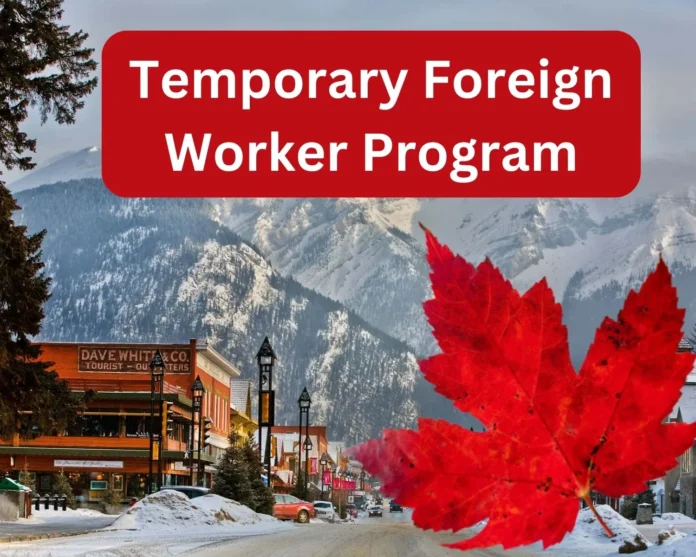Introduction
The picturesque town of Banff and the nearby hamlet of Lake Louise are renowned for their breathtaking landscapes, bustling tourism, and lively local businesses. A significant number of these establishments depend on the Temporary Foreign Worker Program to meet their staffing needs. Every year, thousands of visitor’s flock to these scenic destinations, staying at hotels, dining at various restaurants, and shopping at local boutiques. However, recent changes to the Temporary Foreign Worker Program are raising concerns among business owners. These adjustments could result in considerable labor shortages, potentially forcing some businesses to reduce their operations or even close their doors.
The Impact of TFW Program Changes on Banff Businesses
Banff and Lake Louise have long depended on a workforce comprised of both Canadians and foreign workers. Walking into any shop or hotel, guests are as likely to be greeted by a local as they are by an employee from Australia, South America, or Asia. However, the new federal restrictions are set to disrupt this balance.
- Employers can now only hire 10% of their workforce through the TFW Program, a drastic reduction from previous allowances.
- The work permit duration has been shortened from two years to just one.
- The program, once a stepping stone for many workers seeking permanent residency (PR), now limits these opportunities.
Karlie Fleury of the Banff & Lake Louise Hospitality Association warns that these restrictions will exacerbate pre-pandemic labor shortages.
“If we already faced difficulty filling certain positions before, this will now affect a much broader scope across the industry,” she explained.
Businesses Struggling to Stay Afloat
Employers in Banff are already feeling the pressure. Doncath Holdings Ltd., which owns and operates nine gift shops in Banff, reports that 30% of its workforce consists of foreign workers. With the new cap, maintaining business operations will become a challenge.
Rebecca Lipes, general manager of Doncath Holdings, who has been with the company for 30 years, expressed concerns over the shrinking labor pool.
“There’s just not enough of a workforce available in Canada to fill all these positions,” she said.
The company expects to lose seven full-time, trained workers in the next nine months.
“We contribute to the life and vibrancy of this town. Unless something changes soon, we will not be able to operate all nine stores,” Lipes added.
Workers Left in Limbo

For foreign workers, these abrupt policy shifts have shattered long-term plans. Natalia Rosas, a Chilean employee in Banff, was diligently working toward meeting the requirements for PR. Now, with the new restrictions, her hopes have been dashed.
“All of a sudden, things changed with no exceptions,” Rosas lamented.
With her visa expiring next January, she faces an uncertain future. “We don’t want to leave, but we have no other option.“
The emotional toll on foreign workers and their employers is immense. Jessica Dostie, a family owner of Doncath Holdings, emphasized that these employees are more than just staff. “They are like family to us,” she said, highlighting the deep relationships built over years of working together.
The Broader Implications
The federal government implemented these changes in response to concerns about the housing crisis, declining unemployment rates, and reports of mistreatment within the program. Prime Minister Justin Trudeau’s administration aimed to prioritize Canadian workers while addressing pressure on housing markets.
According to public data from Immigration, Refugees, and Citizenship Canada, 183,820 temporary foreign worker permits were issued in 2023—an 88% increase from 2019. While the government seeks to tighten regulations, local businesses argue that this broad-stroke approach ignores the unique labor needs of tourism-driven economies like Banff’s.
What’s Next for Banff Businesses and Workers?
The hospitality sector in Banff is facing a precarious future. As employers struggle to find committed Canadian workers willing to take on these roles, businesses may be forced to scale down operations or close entirely.
Hopes are pinned on potential policy reversals or modifications in the future. Some believe that a change in government could lead to a more balanced approach, allowing businesses to continue thriving while maintaining fair labor practices.
Conclusion
The recent changes to the Temporary Foreign Worker Program have placed Banff’s tourism and hospitality sector in jeopardy. With businesses struggling to hire and retain staff, and foreign workers facing uncertain futures, the town’s vibrant economy stands at a crossroads. The coming months will determine whether adjustments to these policies will be made—or if Banff’s iconic businesses will be forced to shut their doors for good.


